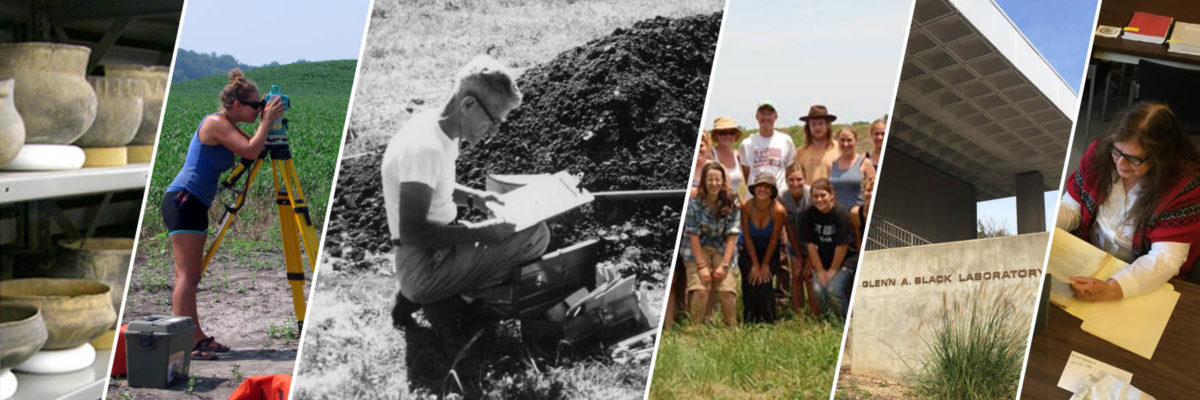October 23, 2018
by Kelsey Grimm, Librarian
Early this month I had the fortune to attend the 11th Annual International Conference of Indigenous Archives, Libraries, and Museum in Prior Lake, Minnesota. This is a wonderful conference all around and brings together those who work to protect and advance indigenous cultures. There are day trips and workshops in the days leading up to and a variety of sessions during the two day conference. This was my second time attending.
The session that most piqued my interest occurred on the second day: “NAGPRA in the Archives: Repatriating Records” presented by Meghan Dorey of the Myaamia Heritage Museum & Archive and Joe Halloran and Jeff Holth of Jacobson Law Group.
My job as Librarian of the Glenn A. Black Laboratory of Archaeology means that I had to quickly learn about the Native American Graves Protection and Repatriation Act (NAGPRA). I haven’t directly had to understand the law, but most of my colleagues are in constant communication with the NAGPRA office of Indiana University. They are working with several native communities to repatriate ancestors and associated objects. Because of these NAGPRA conversations concerning the archaeological collections, the GBL has been able to collaborate and partner with these native communities on other projects, some that directly have benefited the library and archives. NAGPRA is something that I’ve been aware of, but not had to directly understand.
Throughout “NAGPRA in the Archives,” Meghan Dorey, Joe Halloran, and Jeff Holth told the story of how two Miami Council Books were returned to the Miami Tribe of Oklahoma.
Upon taking the job of Myaamia Heritage Museum & Archive Manager, Meghan found a file of photocopied documents titled Miami Council Books of the mid-19th century. It was useful at the time just as a reference document, but eventually Meghan wanted to find out where the physical documents were. Her personal research led her to the Gilcrease Museum in Tulsa, Oklahoma…90 miles from the Myaamia Heritage Museum in Miami, Oklahoma. Within the Thomas Richardville manuscript collection she found the Miami National Council Book (1860-1862). When visiting the collection to obtain better digital images of the Book, a staff member went to bring the book to Meghan and instead brought a second Miami Council Book!*
When Meghan returned, she believed that these items should be returned to the Miami Tribe. They were detailed accounts of tribal affairs, records of meetings, and copies of letters. She did more research and presented her thoughts to the Tribe’s leaders. They agreed and contacted their legal representatives. It was decided to just ask the Gilcrease Museum if they would return the Miami Council Books to the Miami Nation – unsurprisingly, they replied no.
This led to a two-year process of collecting information and preparing a case for why the Miami Council Books should be returned to the Tribe. They discussed using replevin to obtain the documents – a procedure enabling the recovery of property taken wrongfully or unlawfully, pending a final determination by a court of law – a procedure used by the National Archives Records Administration of the United States. The second option was by using NAGPRA.
NAGPRA is legislation that provides institutions receiving federal funding with a process for transferring Native American cultural items – human remains, funerary objects, sacred objects, and objects of cultural patrimony – to lineal descendants and federally recognized tribes. An object of cultural patrimony is an object that possesses continuing cultural, traditional, or historical importance to the heritage of a group. Think about what the Declaration of Independence means to the United States… it is not owned by a single person; it represents the history of a nation. It is a document, yes, but it is an object of cultural patrimony too.
The Miami Tribe of Oklahoma was preparing to take their case before the NAGPRA Review Committee. They are not the official deciding body, their decisions are not legally binding, but they do hold a kind of weight – a precedent would be set if they were to decide if a document/manuscript were an object of cultural patrimony.
Days before the review hearing, the Gilcrease Museum returned the Miami Council Books to the Miami Tribe of Oklahoma. This was outside of any legal or official system. The NAGPRA Review Committee therefore decided to not review the case since the materials had been returned. No precedent has been set on the matter of documents being repatriated.
What does any of this mean to you?
NAGPRA legislation is not taught in library and archive settings.
I would hazard that most archivists have not even heard of NAGPRA. It is nowhere on their radar, unless they happen to be affiliated with a museum working to repatriate Native American ancestors and funerary objects. NAGPRA has been focused on ancestors and funerary objects, not documents, not records. Should they?
I don’t have those answers yet, fully, but believe archivists need to be aware of NAGPRA. It might mean repatriating documents to tribes, but it might not. It means bringing the tribes to the table. It means better understanding the collections we’re tasked with preserving.
*As a side note, archival finding aids do not usually list every item within the collection. Finding aids are general inventories to give a potential research the idea of what might be found in the collection… not to list every item. It is not unusual to see that a staff member did not initially bring the correct item.


